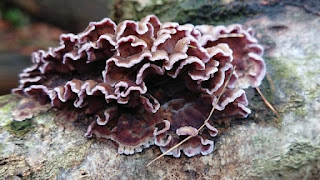The First Human Case
The initial human case involves a 61-year-old man from Eastern India who sought medical help due to several symptoms, including a hoarse throat, fatigue, cough, and difficulty swallowing. While his chest X-ray at the hospital appeared normal, a neck CT revealed an abscess. The sample was collected and sent for further examination.
Challenges in Analysis
Identifying the fungal strains within the pus was not an easy task, and after multiple unsuccessful attempts, the sample was forwarded to the Reference and Research Center on Fungi of Medical Importance, which collaborates with the World Health Organization (WHO). It was here that the DNA was sequenced and identified as Chondrostereum purpureum.
Patient's Work History
According to the research team's case report, the patient denied working with this specific plant pathogen. However, he did confirm working with decaying materials and other plant fungi for an extended period as part of his research activities.
Medical Team's Thoughts
The medical team stated that out of millions of fungi in the environment, only a few hundred can infect humans and animals. The possibility of plant pathogens causing diseases in humans and animals introduces a new concept that raises serious concerns about the likelihood of such infections occurring in both healthy and immunocompromised individuals. If fungi can bypass phagocytosis and evade the host's immune system, they can potentially become human pathogens. Fungal species capable of growing at 35-37 degrees Celsius are more likely to become a human pathogen.
WHO's List of Critical Priority Pathogens
Currently, the World Health Organization lists 19 fungal threats to human health, referred to as "critical priority pathogens." These include Aspergillus fumigatus, which has a mortality rate of 47-88% for those infected; Candida albicans, the most common and responsible for 20-50% of infected individuals' deaths; Cryptococcus neoformans, known for its tendency to infect the brain; and Candida Auris, which is particularly adept at avoiding antifungal drugs.


Post a Comment